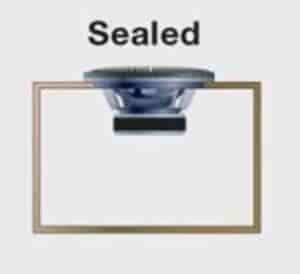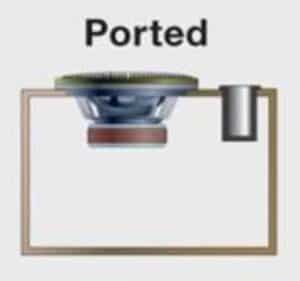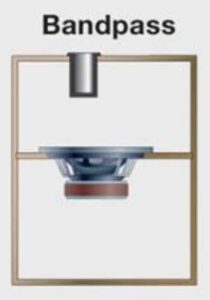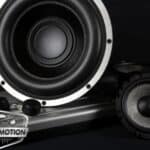There are many different types of enclosure available on the market today, ranging in size from small desktop speakers to large floor standing systems. However, the most important thing to consider when choosing an enclosure for your system is how much power it will need to drive your speakers. This is Subwoofer Boxes 101.
This article will help you understand what subwoofers are, how they work, and which ones are best suited for your needs.
A subwoofer is a speaker that produces low-frequency sounds (below 100Hz). These frequencies are not audible to humans, but they are heard by our ears as vibrations. In fact, these vibrations are so strong that we feel them in our bodies.
A subwoofer box is an enclosure used to house a subwoofer. It is usually made of metal or wood with a cone-shaped driver inside. The cone-shaped driver vibrates when sound waves hit it, producing low-frequency sounds.
Types Of Subwoofers
There are several different types of subwoofers available on the market today, each with its own unique advantages and disadvantages.
Sealed Enclosure
 An airtight box that houses your subwoofer is a sealed enclosure (s). This situation has the advantage of producing clear and accurate sound. Moreover, these boxes often have a smaller size and more installation options. The drawback is that they frequently use more power.
An airtight box that houses your subwoofer is a sealed enclosure (s). This situation has the advantage of producing clear and accurate sound. Moreover, these boxes often have a smaller size and more installation options. The drawback is that they frequently use more power.
Ported Enclosure

Low frequencies played through a vent, also known as a port, on ported boxes. As a result, a ported enclosure is more cost-effective than a sealed one because it requires less amplification than a sealed enclosure. A ported enclosure has the drawback of taking up much more room than a sealed enclosure.
Bandpass Enclosure

A highly unique kind of enclosure called a bandpass enclosure combines the greatest features of a sealed enclosure with a ported enclosure. In this case, the subwoofer is essentially mounted inside a dual-chamber box (one chamber sealed, the other ported).
The ported enclosure produces extremely powerful sound waves restricted to a small frequency range. For example, they often truly boom because they are so effective. Read the owner’s handbook before utilizing this setup because not all subwoofers perform well in it.
If you’re looking to add some bass to your music system, there are several options available to you. However, one of the easiest ways to accomplish this is by using a subwoofer enclosure. These enclosures come in various sizes and shapes, so you can choose one that will fit into your space and provide the level of sound quality you desire.
Choosing The Right Subwoofer For You
Before you purchase any type of enclosure, make sure you understand what features you need. This includes size, shape, portability, power requirements, and more. Once you’ve decided on the right enclosure for your needs, you’ll also need to decide how much bass you want to add to your system.
If you want to build a subwoofer box yourself, there are several things to keep in mind. First, make sure you use high-quality materials. You should also ensure that the box has enough space inside so that the speaker will fit properly. Finally, make sure that the box design includes proper ventilation.
The Best Way To Install A Subwoofer Box
One of the easiest ways to install a subwoofer box is by using a pre-fabricated enclosure. These enclosures come in various sizes and shapes, allowing you to choose one that fits your needs. Moreover, they’re also easy to install because they usually require only a few screws.
The Best Way To Hide A Subwoofer Box From View
If you’re looking for a more custom solution, you might consider building your own subwoofer box. This will allow you to customize the size and shape of the enclosure to fit your space perfectly. You can use wood, metal, plastic, or even cardboard as a material for your enclosure. Contact Music In Motion for your subwoofer box and custom fabrication needs today.
 Remote Car Starters ExaminedPrevious Post
Remote Car Starters ExaminedPrevious Post Car Audio TipsNext Post
Car Audio TipsNext Post